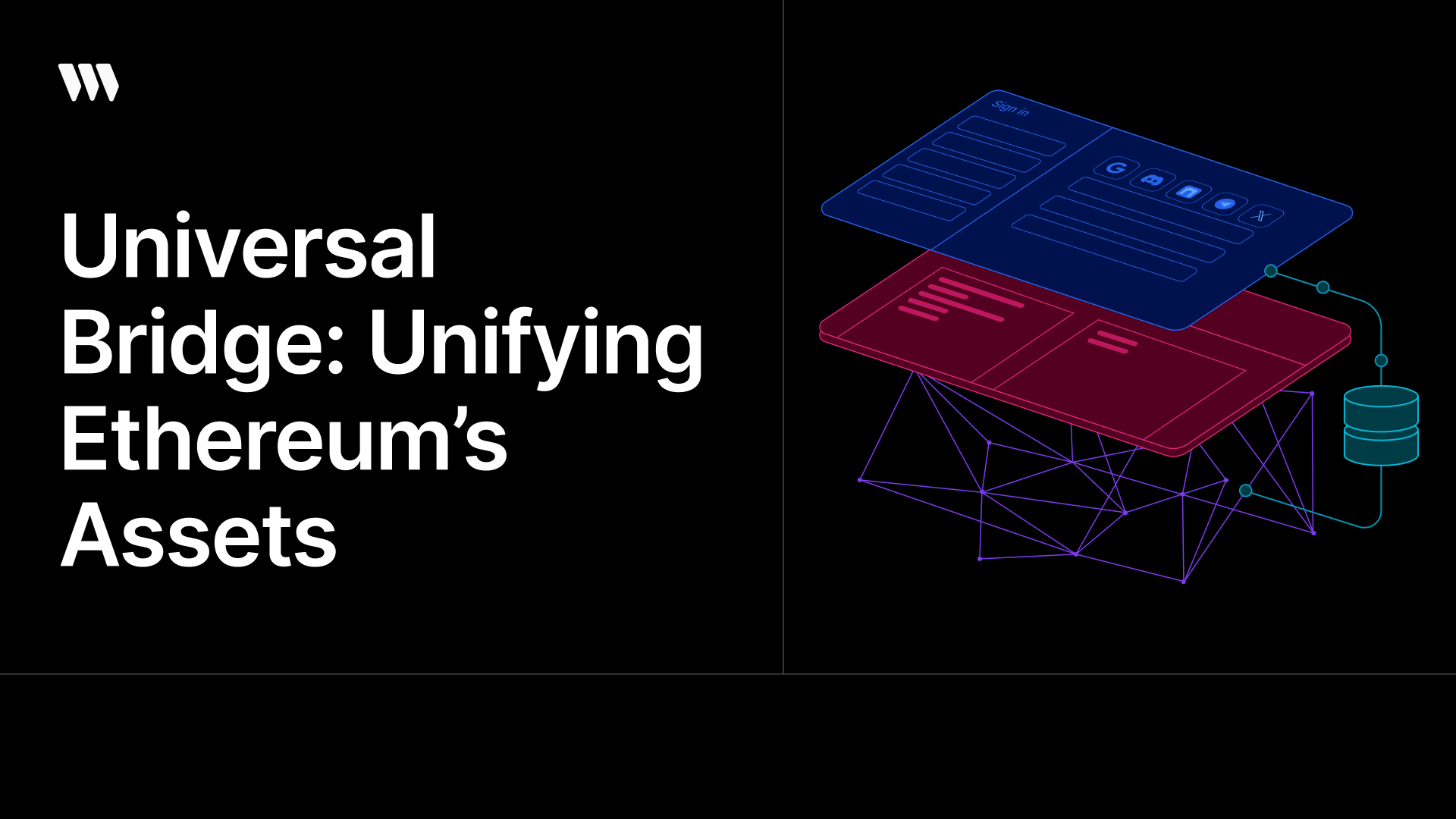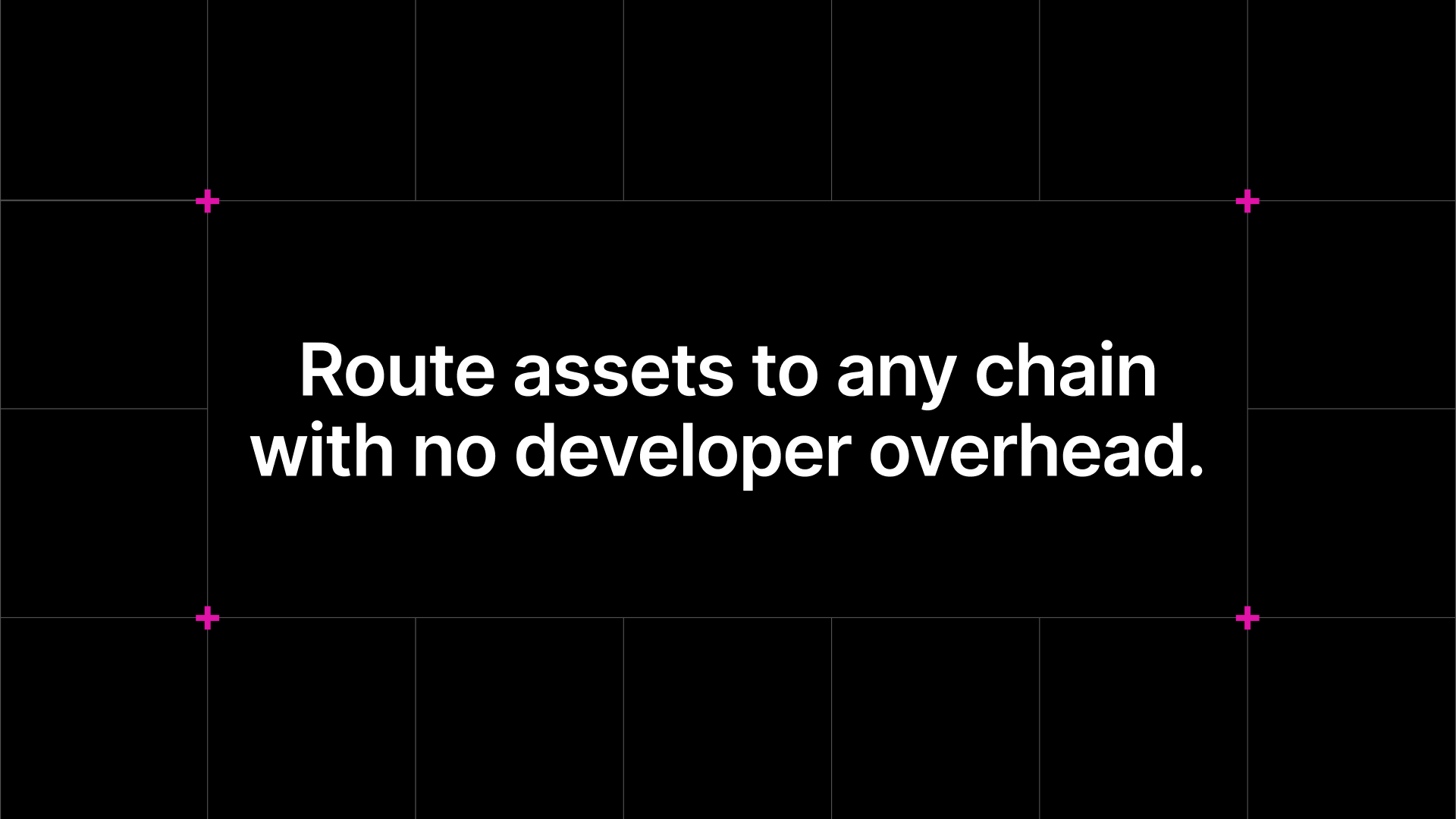Universal Bridge: Unifying Ethereum's Assets
Use any asset, on any chain

Over the past several years, rollup activity has replaced mainnet's. This brought a golden age of onchain app development. For a fraction of a cent, users can execute transactions almost instantly. Developers can choose to build on a chain that’s engineered with their app and its community in mind. At thirdweb, we’ve been at the front lines of this transition. We were one of the first to bet on the "any EVM" vision, supporting all 2,588 chains and counting. This means handling any edge cases between chains so developers don't have to. Regardless of where you deploy your app, thirdweb gives you the same tools to build.
Then, we did it for account abstraction. Developers can add gas sponsorships or batched transactions to any app in a single line of code. Rather than implementing EIPs, you can focus on building apps, because that’s what you set out to do.
This isn't limited to web apps, either. We've built tools for mobile apps, Unity, Unreal, Telegram, LINE, AI, and more. Thirdweb is universal. But your onchain assets? They're locally restricted. Despite so much diversity among EVM chains, most users limit themselves to a select few. Moving between chains is slow, tedious, and leaves funds isolated from the apps you use most often.

This fragmentation isn't a secret, and there are plenty of teams trying to address it. But this is creating the same problem for developers as we saw with L2s. Integrating all bridging protocols is impossible, and knowing which to use is confusing. It’s the classic “14 competing standards” problem. Every new solution increases the difficulty for developers to use any of them.
Developers can only serve the users of their supported chains, and users can only access that chain's assets. This contradicts blockchains' promise of interoperability. For true interoperability, assets shouldn't be bound to one or a few chains.

Introducing: Universal Bridge
Thirdweb made chains universal; now we’re making the assets on them universal. The most promising use case of blockchains is borderless, uncensorable assets and data. Isolating assets to a single chain is no better than isolating assets to a single country, or data to a single app. For users to control their own assets, they need to be usable anywhere. They need to be universal.
We're building the tools and infrastructure to use any asset on any chain. No, we're not building a 15th bridging standard. The world doesn't need another "modular intents-driven cross-chain interoperability protocol." At thirdweb we build tools, not EIPs. We make it easy to use all existing interoperability protocols from our full-stack tools and APIs.
This mission goes well beyond on-ramping, off-ramping, or bridging crypto. It includes everyday app interactions like collecting an NFT on Zora, swapping tokens on Unichain, or creating a Farcaster account on Optimism. Holding assets on a specific chain will no longer be a prerequisite for using an app. Thirdweb will route assets and data from one chain to another with no developer overhead.
As part of this mission, what’s known as thirdweb Pay is now consolidated into Connect. This is a key part of the onchain stack, and we’re connecting it directly to our other tools. We’ll continue to add complementary features like webhooks, transaction bookkeeping, and more. They’ll be available for free to every developer using thirdweb.

We’ve already made UI improvements and added over 1,000 routes to our existing components. In the coming weeks, we’ll be releasing more routes, APIs, and frontend components. Transacting with any contract on any chain should feel as simple as using your own database.
Developers build with thirdweb across thousands of chains for users in hundreds of countries and on dozens of platforms. Universal Bridge makes it possible to do the same across chains. We can't wait to keep building the Universal Bridge to discover what developers create with it.

